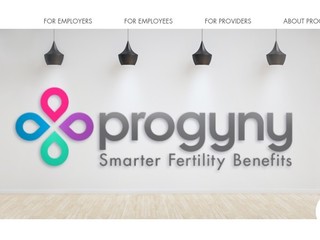
With $1.3 billion in venture funding, the femtech space is booming
Yet, that still only accounts for 7% of all dollars going into US digital healthtech companies
 Given that women make more than half of the population, it's more than a little odd that "femtech" is still thought of as a niche in healthcare. In reality, female healthcare should just be known as, well, "healthcare."
Given that women make more than half of the population, it's more than a little odd that "femtech" is still thought of as a niche in healthcare. In reality, female healthcare should just be known as, well, "healthcare."
As if to illustrate how far we still have to go to make that happen, a new report from Rock Health on Monday showed that, even though the space is exploding in funding so far this year, it's still only accounting for a relatively small percentage of total dollars going into the healthcare space.
Through the first eight months is 2021, digital health startups that target women reached $1.3 billion, already almost doubling the $774 million raised in all of 2020, with an entire quarter of the year left to go. This is, by far, the most activity that the femtech space has ever seen; the previous high was the $864 million raised in 2019. Yet, that's only 7% of all the funding that went to to digital health companies in the U.S. during that time period.
In fact, in the last decade, companies catering to female health have raised just 5% of all funding to digital health funding.
Partially, this may be due to the fact that women are more less to adopt digital health tools than men, though the numbers have increased in the past few years: from 2018 to 2020, adoption of wearables rose from 32% to 36%, while adoption of digital health tracking went from 32% to 50%.
Yet, as Rock Health notes, "men respondents reported greater year-over-year increases," and a larger gender gap remains. Rather than just looking at adoption rates, the better question might be why this gap exists in the first place and what's holding women back from utilizing digital health tools at the same rate? The answer might be circular: these tools aren't designed for women, so women don't get as much out of them, and they are, therefore, less likely to adopt them, making it less likely that the tools be designed for their needs. Rock Health's own data shows that the lack of adoption might be due to a lack of results.
Rather than just looking at adoption rates, the better question might be why this gap exists in the first place and what's holding women back from utilizing digital health tools at the same rate? The answer might be circular: these tools aren't designed for women, so women don't get as much out of them, and they are, therefore, less likely to adopt them, making it less likely that the tools be designed for their needs. Rock Health's own data shows that the lack of adoption might be due to a lack of results.
"Rock Health’s 2020 Consumer Adoption Survey also suggests that there may also be gender differences in the utility derived from digital health tools. For example, 66% of women respondents that owned a wearable reported that it helped them achieve their goals compared to 76% of men respondents," the company wrote.
"This helps underscore a message we’ll keep promoting—it’s imperative to build digital health solutions specifically with women+ values, wellness and care priorities, and daily behaviors in mind."
A maturing space
While funding has reached new heights so far this year, it has done so across a similar number of deals: 26 in all, compared to 22 in all of 2020. This suggests a space that is maturing, and raising larger rounds, with more funding going to later stage deals.
In 2017, there was no funding going to any deals beyond Series B, but by 2021, the median deal size in companies raising a Series C or above was $134 million, even as seed deals accounted for a larger percentage of deals than ever before. Some of those big later stage deals include Carrot Fertility, a fertility benefits company that raised a $75 million round; in-person and virtual care provider Tia, which raised $100 million; and Maven, a provider of virtual care for women and families, which raised $110 million for a $1 billion valuation, making it the first digital health unicorn in the femtech space.
Some of those big later stage deals include Carrot Fertility, a fertility benefits company that raised a $75 million round; in-person and virtual care provider Tia, which raised $100 million; and Maven, a provider of virtual care for women and families, which raised $110 million for a $1 billion valuation, making it the first digital health unicorn in the femtech space.
Primary care taking over pregnancy
Startups focused on women's health can encompass a whole spectrum of subsectors within the space, with everything from period tracking to menopause to maternal care to fertility to gynecologic care.
Over the past five years, the biggest subspace for femtech was in pregnancy, postpartum, and parenthood, which accounted for 37% of all funding. However, with $316 raised so far this year, that was only the second biggest sector; it has been surpassed by primary and preventive care, with $668 million raised. Fertility support was the third largest, with $220 million. This makes sense, as everybody can use a primary care doctor, while pregnancy services are something that less than half of women will need to access.
Rock Health cites four megadeals, meaning those over $100 million, which contributed to those spaces being dominant: the aforementioned raise from Maven, along with $500 million for telemedicine platform Ro, which has a women's health platform called Rory; virtual care platform LetsGetChecked, which raised $150 million; and life sciences company TMRW, which raised $105 million.
(Image source: health.usf.edu)
Related News


Kindbody looks to create an end-to-end solution for women's health





